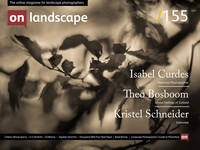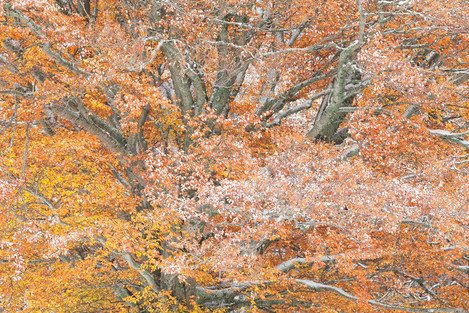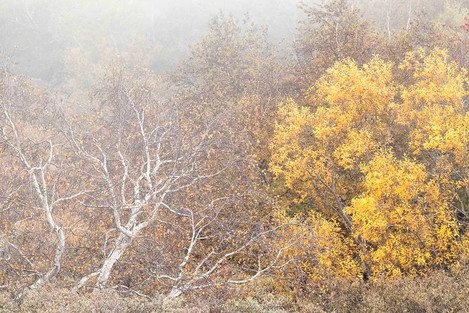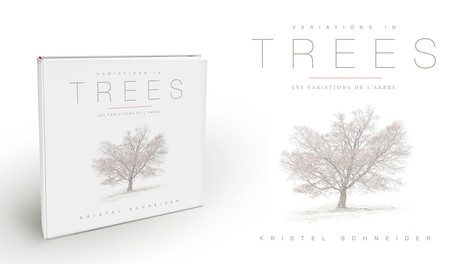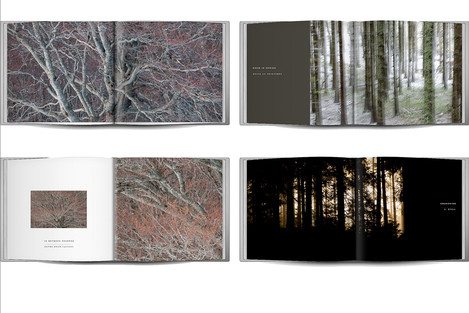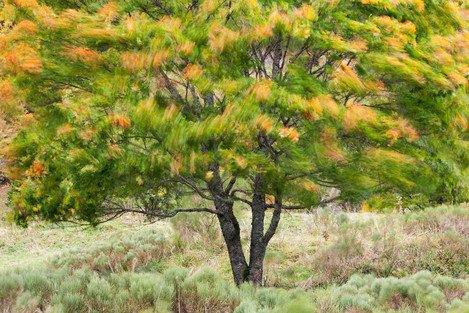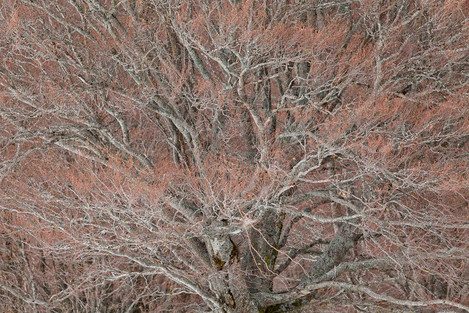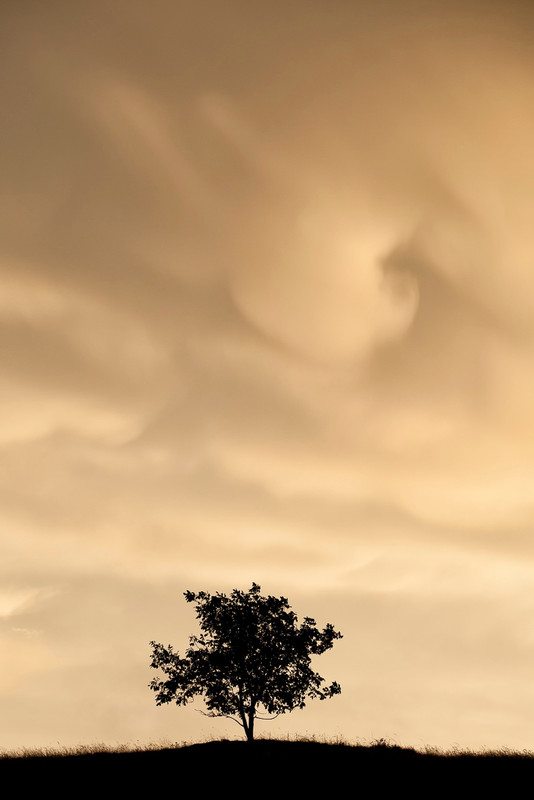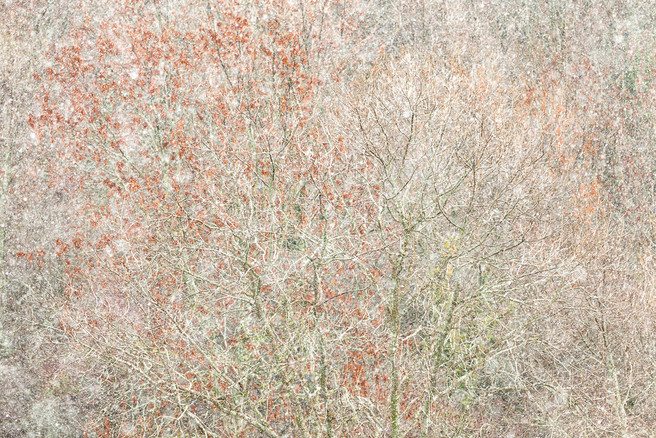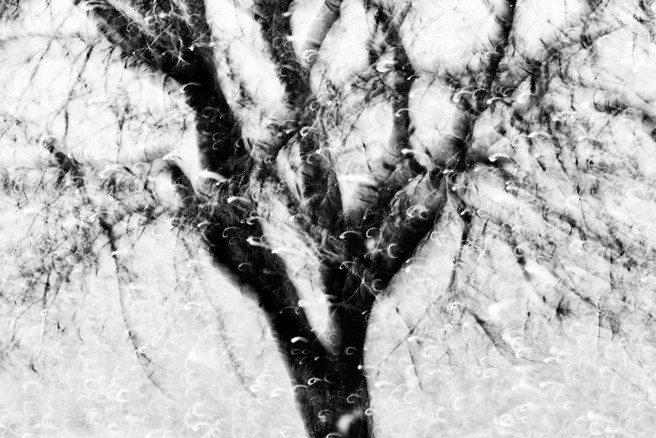Inspired by Trees

Kristel Schneider
Kristel Schneider is a full-time photographer with a passion for art and nature. Her work explores the patterns, textures, lights, and colours of nature. She is an intuitive artist with an eye for detail; she aims at creating intimate compositions
to evoke a certain feeling in the viewer through her personal use of natural light, her choice of weather elements and the rhythm of nature. Photography is more than just a passion, for her it is a way of creative living and the best way to express herself.
She grew up in the Netherlands and lived a big part of her adult life in Amsterdam. She studied human resources management and communication and had worked as a communication consultant for a pharmaceutical company before she decided to
move to Auvergne, France, in 2007 to become a full-time photographer. Since 2009 she has worked as a full-time photographer and has carried out several private commissions and photo assignments. Her work can be found in various publications, magazines, and books. She is regularly invited to present her work at photo festivals throughout Europe. She published her first book, Variations in Trees, in December 2017. And in October 2023 she released her 2nd book RIVERSCAPE.

Charlotte Parkin
Head of Marketing & Sub Editor for On Landscape. Dabble in digital photography, open water swimmer, cooking buff & yogi.
Charlotte Parkin (CP): In most photographers' lives there are 'epiphanic' moments where things become clear, or new directions are formed. What were your two main moments and how did they change your photography?
Kristel Schneider (KS): In my younger years I travelled a lot to Asia and was fascinated by the people, their expressions, their colourful clothes, the environment they were living in and I loved the interaction with them.
My photography back then was mainly 'street-photography'. This all changed when I started taking painting classes in, Amsterdam, my hometown. Unfortunately, I soon realised that I could not draw very well and let's say I became an abstract painter very fast. The good thing about it was that it had a big influence on my photography; I started looking at other subjects, more in detail and I became drawn to structures and textures. Call it the seeding moment of my abstract photography.
The moment that changed everything in my life, and as a consequence, my photography too, was when I moved from the Netherlands to France, from the big city to the countryside. This was in my forties. I decided to give up my communication job and focus totally on my passion, photography and two years later I became a professional photographer. Living in an environment with such natural beauty, mountains, forests, volcanoes and meadows all around me changed my direct surrounding and my photography subject changed from street to nature.
CP: Tell me about why you love landscape photography?
KS: Being close to nature made me look to the natural world in a different way. Seeing how beautiful the area is around us and also how fragile and vulnerable it is. This makes you want to treasure it.
Where and whenever you go, no landscape looks the same the second time. The seasonal changes, different light projection on the landscape and the mood you're in yourself make the landscape look different every time you visit. You can always see other elements that will attract you as if you saw it for the first time. That is one of the reasons why photography always makes me happy and I hope, by showing my work to a wider public, people will also pick up a camera and start exploring and looking for these different elements. Once we start 'seeing' and not only just look, you are able to notice how much beauty there is all around us.
CP: Tell us a little background on what your first passions were, what you studied and what job you ended up doing.
KS: I was born in The Netherlands and lived a big part of my adult life in Amsterdam. I studied Human Resource Management and Communication and worked the last 6 years of my other professional career as a Communication Adviser for a Pharmaceutical Company.
As I said earlier everything changed in 2007 when I decided to move to Auvergne, in France to focus on my passion, photography. In 2009 I became a professional photographer, as well as a workshop instructor and tour guide for Nordic Vision Photo tours.
Photography is now more than just a passion for me; it's a way of living and the best way to express myself more creatively.
CP: How did the book 'Variations in Trees' come about? What was the inspiration behind the book?
KS: It all started in 2014 with my first photo-exhibition tour "Variations in Trees". It was first exhibited in Belgium and later at several festivals in France, then Denmark and finally Italy. The visitors started to ask why I did not have a book. After I was asked to give lectures about my tree photography I realised it was time to start thinking about my first book. It was a big step, financially speaking but above all, emotionally.
CP: What came first the idea for the book or the project?
KS: The project. When I moved to Auvergne in Central France and started looking for a house in the Livradois Forez, I remember that all those trees at first scared me a little, the darkness, the silence...this quickly changed when the dark forest felt more familiar and I saw the beauty of it. Then the trees became a big source of inspiration. After moving there I did not have much time for photography at first as I focused on the garden and the farmland behind our new house. I rapidly got inspired by a single tree and the people who follow me on Facebook know this tree under the name 'window view'. This single tree is the very beginning of my ongoing tree project. The trees stayed the red thread in my photography portfolio.
CP: Why trees?
KS: My love for trees has grown in my youth, something I have from my father. The 'seeds' were planted during the many walks into the forest during our Sunday family outings but came out much later, when I myself got more interested in nature. I then discovered what my father saw and loved so much in the forest. Trees with all their different shapes, colours and the power they can express. It may sound strange but I owe much to the tree, it has made me look differently at my direct surroundings and playfully developed my photography. It's a challenge to see what you can do with a subject like this, where you often look beyond, try to capture it in different ways.
CP: The photographs in the book are from Auvergne, France - what's your connection to the place and the woods? Why is Auvergne so special?
KS: When I moved to Auvergne I had the feeling I was on holiday every day. This region has such a diversity in nature and landscapes that I am still not bored exploring it. And every season has its own charm too. One result of the decision to move to France is that I now have to live with much less income. In the past, I had a good salary but no time, now it is more the other way around. But as I said before it was a decision that brought me closer to nature and gave me the opportunity to explore my own living area. And living in the middle of one of the regional nature parks, the Livradois Forez I am surrounded by forest, a great source of inspiration!
CP: How did the idea of the structure, the format, size of the book develop? Did you manage the project yourself or did you work with an editor?
KS: I published the book myself, this way I had the design in my own hands. Together with my graphic designer, Duncan Baumbach, I had discussions about the size, thickness and overall layout of the book. We decided not to go for a 4-season type of book but more for the in-between seasons - my personal favourite. As my tree portfolio is still ongoing, it was a challenge to choose a set of images that matched the design and inevitable it meant killing some of my personal 'darlings'. we wanted the book to be slightly different, not the 'standard' photobook design like the white background and one or two images placed in the centre. The designer's opinion was "less is more" - it is not the quantity of images but the quality that matters. Therefore we created a final object that is not a big thick coffee table book displaying a whole portfolio. You usually see that people start to scroll halfway a book, instead of going through and enjoy the images that still remain unwatched.
If you asked Ducan, my designer, that's what he would say, 'When I zoomed in on Kristel's photos they immediately reminded me of the American abstract painter Jackson Pollock. I concluded that I should present Kristel's work as art. I wanted the readers of the book to feel that they were visiting a museum which exhibits organic art made by mother nature
Kristel mentions in her foreword "...Trees, we often pass them by without ever really seeing them". I wanted to emphasize this by letting the viewer see all the tiny details, which they otherwise would have missed. It was also this quote which inspired me for the cover. Lots of negative space, serene and almost transparent. Instead of making a cover that screams for attention we choose to go for emotion. I wanted to book to be modest and grand at the same time, minimalistic but not boring and surprise the beholder with the strength of the photography. We choose to use graphic design only to support the images, let them breathe and just show the captured beauty. "
The combined ideas about the graphic design and my photography had us work together behind the computer, choose the right details and the right colours for the background. As colours do play such an important role in an image mood. I must say, creating a book is a lot of work but I am very happy with the end result 'my first' is a dream come true.
CP: Where was the book printed and how was the experience of working with a printer?
KS: After asking a couple of friend photographers and comparing prices I decided not to print in France but in the Netherlands at Drukkerij Roelofs, in the town of Enschede.
First of all, I wanted a printer who had a lot of experience with printing books and worked together with a separate bookbinder - for me, these are two different professions. I was very lucky that my graphic designer has worked in the printing world, this made the interaction and preparation of the final documents much easier. I chose the paper by looking at other books, asking around and see what would fit my book better. My dream paper would have been a kind of art paper, like the one I use with my exhibitions prints, Hahnemühle - I find that images come to life on that type of paper - but this is unaffordable for me.
Going to the printing house for the test print session and seeing my images printed on these big sheets, in the final book design was ever so thrilling. The people at the printing house made me feel at home. They took all the time in the world for me because they understood that this moment was very special indeed.
CP: Tell me what your favourite two or three photographs from the book are and a little bit about them.
After the Storm
Inspired by a single tree, is the 'window view' series I talked about earlier on. I took this image just after a huge thunderstorm, the sky was totally orange and I remember I was running to my window when saw the orange sky, the colours and the clouds changed very fast and I was lucky I was just in time to take some shots of the little tree with the curly cloud above it. The beginning of a series that still is going on. What makes me look at this scene is not initially the tree itself but what inspires me is the light and the atmosphere nature is creating and translates into the sky. And every time this same scene looks totally different, that makes this single tree a special window view.
Mosaic
This natural mosaic faithfully expresses the chaos the weather conditions were then. Heavy wind and almost horizontal snow. I remember I had to find something to hold on to, the wind made it almost impossible to stand still. What caught my eyes in this scene were the textures, the different tints and the snow creating an abstract scene. It's not really an 'easy image' to read, as you have to take your time through it to really see all the tiny details that compose it - personally, I can look at it at length. It is one of the images in my new exhibition and I am looking forward to seeing how it is received by the visitors.
Curls
I took this one image in March. One Dutch expression says Maart roert zijn staart - March stirs his tail.In March, it's true the weather can still be stormy and unpredictable. It was so on that particular day, one moment you looked at the sun and in the other, you were pelted with short but heavy snow showers. The tree is a common cherry tree, in my garden That day it was moving in the wind and by using the intentional camera movement technique I was able to emphasize the fallen snow flocks, like curls falling down from its branches.
CP: What other projects are you currently working on and can we expect another book?
KS: At the moment I am very busy with my new exhibition, 'With Trees'. It will run in France and at a festival in Spain this year. And like other photographers have mentioned, working on a first book makes you think about the next one, so yes I have a budding project but it is still very fresh and I can foresee that it will take a couple of years to be completed. When the time is there I will let the readers from On Landscape know all about it.
More information about Kristel's book Variations in Trees and exhibition updates you can find on her website.

